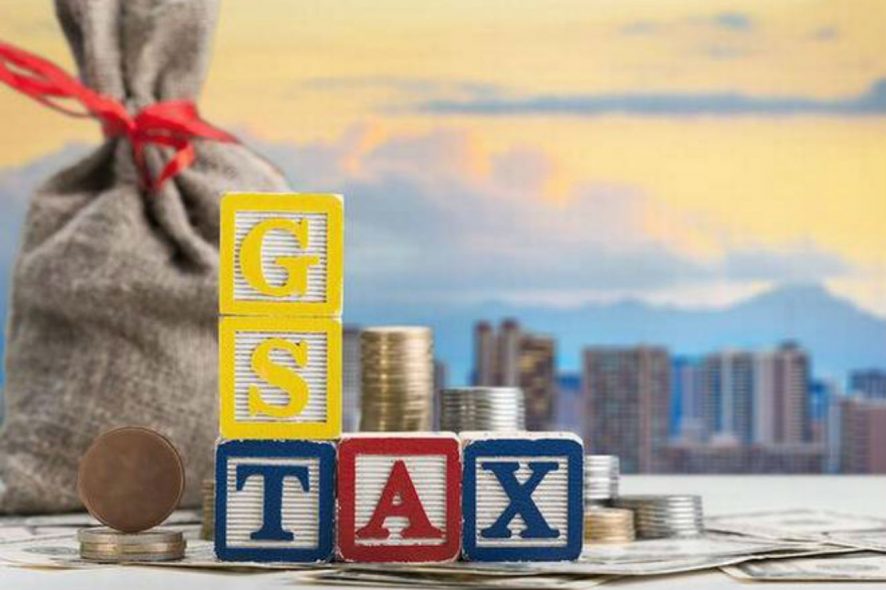Goods and Services Tax (GST) was launched on the 01-07-2017 in a majestic ceremony held in the Central Hall of Parliament on the midnight of 30-06-2017.
As we enter the third year in the GST regime, let’s look at some of the advantages of this system along with the developments that have taken place since the year 2017.
Some advantages of GST:
- Simplified Tax Structure:- Reduction in cascading effect of taxes, transparent and has harmonization of laws and procedures.
- Easy Compliance:- compliance burden has come down with one pan-India tax replacing multiple taxes and automated processes.
- Promoting Trade and Industry:- Seamless flow of tax credit.
- Spurring Economic Growth:- Creation of unified common national market
Some developments during the GST journey since 2017:
- Subsuming of taxes:- It was a new experience of subsuming 17 different types of taxes under GST. Pre – GST, Trade & Industry had to undergo compliances under Central Excise, Service Tax & VAT and doing business in multiple states involved adhering to different VAT laws, compliance through different portals and answering to different authorities. All that has been unified into a single robust online system. Starting up has become simple with one-stop online GST registration for wanting to do business anywhere in the country.
- Formalization of the economy:- More and more businesses moving in the formal economy is evident from the significant increase in the GST taxpayer base. Moving to the formal economy has brought in more visibility and hence more opportunities for Trade and Industry.
- State borders:- The State boarders’ glitches and delays have come down significantly. Due to different VAT laws in different states, inter-state transactions were a pain for Trade and Industry. CST charged on inter-state transactions were an additional cost with no input-credit available and thousands of productive hours were wasted at state border crossings. Cost and time of doing inter-state transactions have come down significantly after the implementation of E – waybill.
- Rate Rationalization:- Major changes in the Tax rates of various items whereby 28% items pulled to 18%, 18% items pulled to 12% & 12% items pulled to 5%. Further various essential goods were made tax free. Mostly goods are unbranded and manufactured by MSMEs. The reduction in almost all the cases has been from the higher to the immediately lower tax slab (whether from 12% to 5% or 18% to 12%) and involves indigenously processed foods, man-made textile yarn, stationery and other job-work items.
- Return filing:- The original concept of four Tax returns in a month (GSTR3B, 1, 2 & 3) was gradually curtailed to two tax returns viz: GSTR-3B & 1. Further the Govt. extended due dates for filing tax returns as and when felt necessary. Quarterly Returns were also prescribed for small taxpayers. Reduction in the late fee payable for delay in filing tax returns from Rs 200/- per day to Rs 50/-per day /Rs 20/- per day. For the Trade and Industry whose turnover was turnover below five crores, quarterly return filling system is proposed. This will benefit 93% of the taxpayers, reduce their compliance burden and increase ease of doing business.
- Exports & Refunds:- Exports are made possible on the basis of Bond/LUT and without payment of IGST tax. A major package for exporters/merchant exporters has been announced after discussions with various Export Promotion Councils & organizations like FIEO, APEC, GJEPC, EEPC, Handicraft EPC etc. Refund Fortnights were conducted on 15th March to 31st March, 2018, 31st May to 14th June, 2018 and 16th July to 30th July, 2018.
- GST Law Amendment Act, 2018:- In its 28th meeting of GSTC held in New Delhi on 21.07.2018, the GST Council recommended certain amendments in the CGST Act, IGST Act, UTGST Act and the GST (Compensation to States) Act. In order to ensure that the changes in the Centre and the State GST laws are brought into force simultaneously, these amendments are made effective from 01.02.2019.
- MSME support and outreach programme:- With effect from 2nd November 2018 GST Help desks were created by CBIC at 80 places all over India to support MSMEs and hand-holding of MSMEs was done with regard to GST Registration / Return Filing / Refunds / E – way bill etc.
Reforms in current fiscal (2019-20):
- New return system:- Introduction of New Return System on trial basis from 01-07-2019 and on mandatory basis from 01-10-2019. SAHAJ & SUGAM Returns for small taxpayers are proposed
- Single Cash Ledger: – Rationalization of Cash Ledger in such a manner that earlier 20 heads are merged into 5 major heads. There is only one Cash Ledger for Tax, interest, penalty, fee & others.
- Single Refund Disbursing:- The Central or State Government which sanctions refund disburses all four major heads of refunds namely CGST, SGST, IGST and Cess.
- Threshold limit for goods: – Threshold Limit of Rs. 40 Lacs is offered of suppliers of goods as per the choice of States.
- Composition Scheme for Services: – Composition Scheme for small service providers up to annual turnover of Rs 50 lacs with a tax rate of 6%
- E-invoicing system: – electronic invoicing system in a phase-wise manner for B2B transactions is proposed to be introduced.
- GSTAT: – GST Appellate Tribunals are being established at various State Headquarters and area benches also.
[Press Release]
[Source: Central Board of Direct Taxes and Customs]
[Image Credits: The Hindu]
Recommendations to read more on GST:
- Understanding GST by GST Gurukul
- Goods And Services Tax – Constitutional Law and Policy by Tarun Jain






